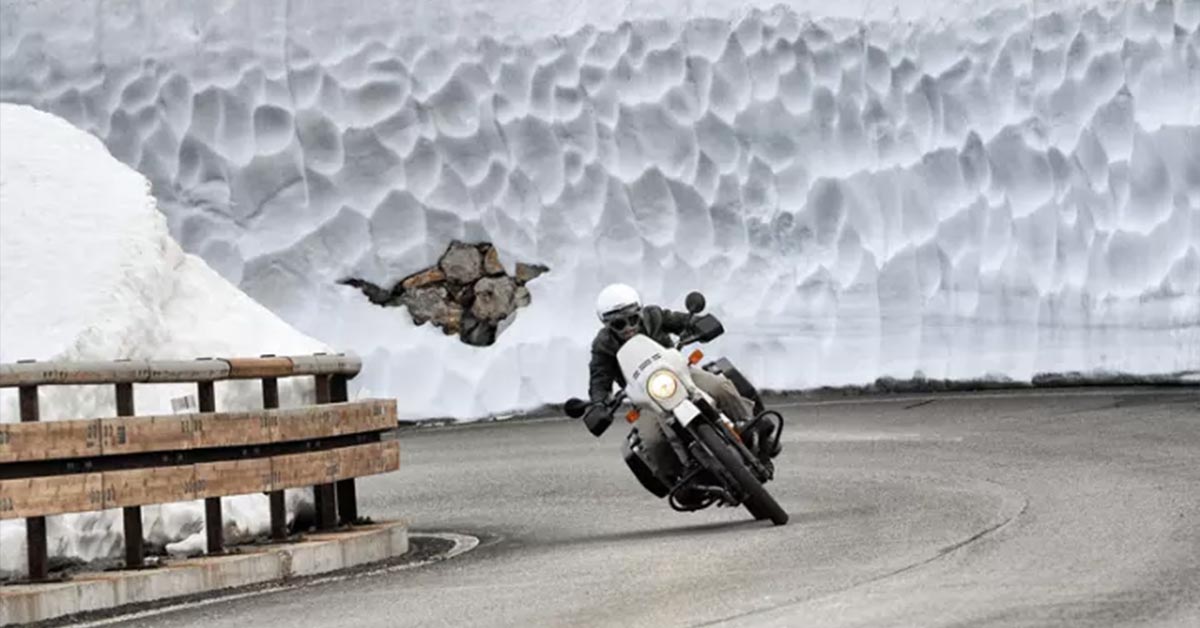As the temperature begins to drop, we are reminded that winter is just around the corner and the riding season is drawing close to an end. For motorcycle enthusiasts, winter means dangerous road conditions caused by ice and snow, and rust and corrosion to bikes caused by salt and other road treatments. For many Canadian bike owners, now is the time to start thinking ahead to winter storage and what steps you can take to ensure your bike is protected during the cold winter months.
Whether you live in an area where weather makes year-round riding impossible, vacationing for a few weeks or months, or only ride your motorcycle on the weekends, a self storage unit is a great option to make sure your motorcycle remains in tip-top shape all year.
Here are some essential things to consider when you are planning your motorcycle winter storage solution…
SIZE OF STORAGE UNIT
A motorcycle does not occupy much space, so a 5×10 storage unit is a perfect size to accommodate a single motorcycle and accessories such as jackets and helmets. If you are looking to store any additional seasonal items or multiple motorcycles, you may require a 10×10 storage unit.
Features to consider when getting a storage unit:
- Heated storage: Provides an environment where temperature and humidity are moderated and protection against extreme weather of any season.
- Security: Individual unit door alarms, video surveillance, and onsite monitoring will provide you with peace of mind.
- Flexible hours: Allows you to access your bike at your convenience.
- Garage-style door: A full-size garage-style door will provide easy access to allow you to get your bike in and out with ease.
PREPARE BIKE FOR STORAGE

Clean your bike
Give the bike a thorough wash and completely dry it by removing all moisture off the surfaces. Be sure to remove any dirt, grime, bug guts, and water spots because they can corrode the finish.
Change the oil
Replace the engine oil and filter plug before putting the bike into storage. Used motor oil is full of harmful contaminants and sediments that are extremely corrosive and can cause serious damage, such as etching of metal surfaces and engine parts, like the transmission gears and bearings. Consult with your owner’s manual to determine what kind of oil your bike uses and what filter matches your model.
Fill the gas tank
Condensation can form when tanks are left partially empty for long periods of time. Prevent any moisture from forming and causing rust by filling the gas tank and adding the recommended amount of fuel stabilizer. Run the engine for a few minutes to allow the stabilizer to settle in. Be sure to use a recommended fuel stabilizer as indicated in the owner’s manual.
Lubricate all moving parts
For chain-driven bikes, lubricate the chain as well as the throttle and clutch cables before storing.
Tend to the tires
Fill your tires to their recommended maximum pressures before storing. Tires are porous and will lose air while in storage. If you can, try to keep your bike elevated off the ground so there is less pressure and weight on your tires. You can prop your motorcycle on a pallet, paddock stands, or on its center stand (if it has one).
Conserve the battery’s charge
If you are storing your bike inside a heated storage unit, there is no need to remove the battery, but it is recommended that you clean and lubricate the terminals and leads to prevent corrosion.
If you are storing your bike where the temperature drops below freezing, it is recommended you remove the battery and trickle charge it all winter. Or, you can store your bike with a fully charged battery, but it is recommended you give the battery a charge once a month during the idle period.

